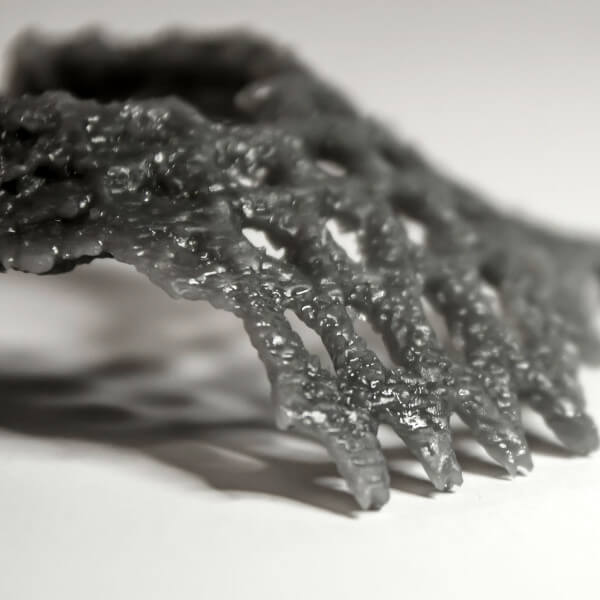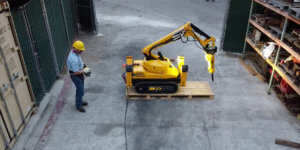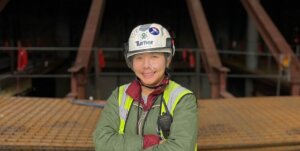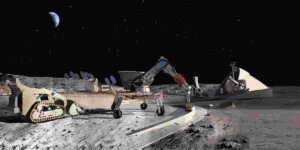
A small-scale form found structure designed and analyzed by Pantazis’ agent based deisgn applet and assembled out of 3-D printed elements. Photo/Evangelos Pantazis
Evangelos Pantazis, a Ph.D. student in the Sonny Astani Department of Civil and Environmental Engineering, received a BUILDers in Residence research position from Autodesk and the Institute for Advanced Architecture in Catalonia (IAAC) to bring his research in computational design to life. Pantazis was one of just four winners of the award globally announced in early December. His residency will begin in the spring 2017 semester.
Pantazis, 31, in collaboration with his academic advisor, David Gerber, has been developing a novel architecture software that generates building designs. The software is able to account for engineering constraints, construction hardware capabilities, building functions and user behavior, something that was once much too complex to be done manually. This all-encompassing method could potentially provide time, money and energy savings to architects.
“It’s a bit of a shifting the role of the architect,” Pantazis said. “The architect isn’t designing geometry purely, rather than is accounting for material behavior and building processes while designing.”
Gerber, assistant professor in the Sonny Astani Department and the USC School of Architecture, believes that the intricate designs created by the program will perform more efficiently than those that are man-made.
“Not only are we automating parts of the design process, we’re also optimizing the design outcomes at the same time,” Gerber said. “We can design the rules that then generate these highly complex, as well as highly performing structures.”

A small-scale, 3-D printed form found structure designed by Pantazis’ agent based design applet. Photo/Evangelos Pantazis
With his residency position, Pantazis can fully test and fine-tune his software, as well as implement robotics into the construction process using the fabrication facility provided by the Autodesk BUILD Space in Boston, Mass. By the end of his residency, he plans to be standing beneath a full-scale pavilion, designed by his software and built by robots.
“Part of this research is looking into how to utilize robots in architecture. Research in robotic construction has been limited and, so far, very few applications have gone on site and proven to be economic enough,” Pantazis said. “What we’re trying to do is contribute a bit more to that.”
He believes a combination between industrial robots and cheaper, low-tech robots could reduce fabrication costs while still efficiently creating a sound structure. However, software programs must account for robots’ capabilities and limitations before they can be used in a building project.
“This is a different track toward designing,” Pantazis said. “The idea of this approach is that it can become all-in-one, software and hardware. In a way, the software would design things based on what hardware you implement to build it.”
By incorporating construction, in addition to engineering restrictions and building performance, into his software and letting the computer come up with possible design choices, Pantazis can eliminate several steps in the traditional architectural process.
“We’re sort of breeding buildings inside the computer,” Gerber said. “In theory, it gives the designer the ability to make a better choice than they could have manually or without the use of these generative computational systems.”
The designs created by the computer depend only on the contraints set by the user. The resulting structures range from basic shapes to highly intricate geometry, where the complexity of each design has a purpose. Pantazis believes this is a crucial distinction from elaborate designs made to suit a particular individual’s aesthetic.
“Things around us are complex in nature, complex in geometry, but there is a reason for it,” Pantazis said. “Complexity of the project should be argued for certain performance criteria and the construction process… and then that can be super simple or super complex, depending not on how crazy I am, but on the environment that you have and the targets that you are setting.”
Published on January 9th, 2017
Last updated on November 7th, 2017













